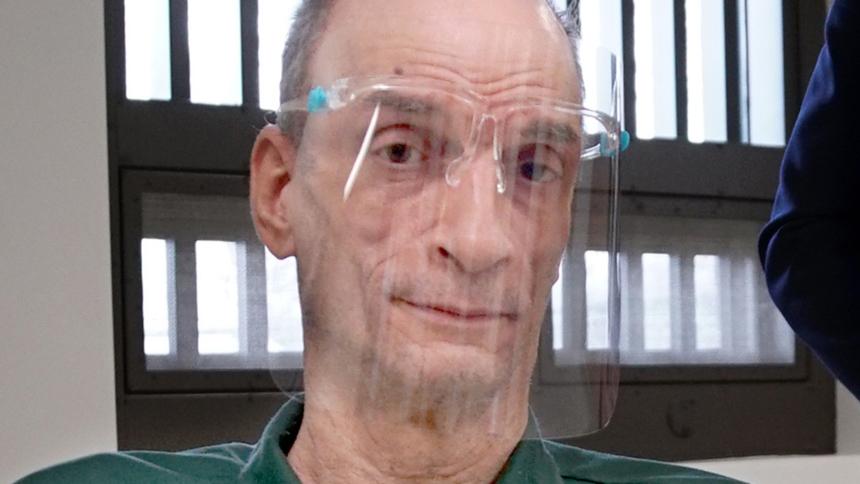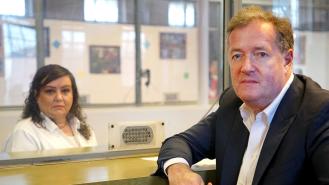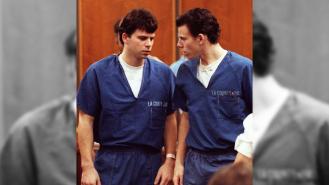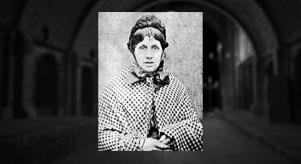
The killer who turned himself in 15 years later
The Killer Interview with Piers Morgan sees the broadcaster and journalist sit down with eight notorious convicted murderers. In a close-quarters, one-hour interview, this is the killer’s chance to give their side of the story.
In episode two, Piers spoke to Robert Spahalski about the crimes that landed him behind bars. The Killer Interview with Piers Morgan is available on demand to Sky and Virgin customers as well as streaming on Crime+Investigation.
Most repeat killers target strangers, picking out potential victims who meet their sinister specifications. But Robert Spahalski now sits in prison for ending the lives of the people he felt closest to.
The sudden confession
The grim story of Robert Spahalski first came to light in November 2005, when the gaunt, gangly 50-year-old walked into a police station in Rochester, New York and presumably stunned the officers on duty by confessing that he’d just killed a next-door neighbour named Vivian Irizarry.
By Spahalski’s own admission, Vivian was a ‘very good friend’, so why had he suddenly snapped and lashed out with such catastrophic violence? If his story was to be believed, it was a moment of hallucinatory psychosis brought on by crack cocaine. As he told detectives, they were both settling into a session of heavy drug use, and she was in the process of slicing open a bag of crack with a knife when he suddenly ‘saw her as a demon’ and ‘freaked out’.
Moments later, Spahalski was hitting her over the head and strangling her. When police found her body, Vivian was naked but for one sock. The explanation, according to Spahalski, was that she had soiled herself during the attack, and he wanted to do her the service of washing her clothes.
It was a startling revelation, but only the tip of the iceberg, with Spahalski also admitting a series of other murders which had taken place many years before.
A life on the margins
Spahalski’s whole life had been lived on the fringes of law-abiding society. While he showed a talent for gymnastics at school and was featured in photographs of the gymnastics team in the early 1970s, he was soon known to police as a small-time criminal, landing in jail for crimes like burglary, car theft and arson.
When he wasn’t banged up, the drug-addicted Spahalski made ends meet as a male sex worker and claimed to have run his own escort business. He was also suspected of the fatal stabbing of a store worker – before police realised the real culprit was his twin brother, Stephen Spahalski, who was imprisoned for manslaughter.
Like his brother, Stephen Spahalski was a habitual criminal, who wound up in jail again and again after completing his initial manslaughter sentence. In fact, the siblings had done time together and flummoxed the prison guards when Robert unsuccessfully attempted to escape during one stint in the late 70s.
While working in the prison auto shop, Robert Spahalski had created a hidden compartment under an old army truck that was due to be dispatched for government use. He had then hidden himself in the compartment, hoping to be driven away from the jail. Although he was caught, the officers genuinely couldn’t work out whether Robert or Stephen was the would-be escapee. ‘They never did and we never told them either,’ Stephen later told the press.
But while Stephen was well aware that his brother was a wily and remorseless criminal, even he was taken aback when he heard that Robert had confessed to taking lives, saying ‘I thought I was the only murderer in the family’.
The other killings
Among the other crimes Robert Spahalski confessed to during his fateful appearance at the Rochester police station, was the murder of a man named Charles Grande, way back in 1991.
Spahalski said that Charles was one of his sex work clients who refused to pay him after a session. For that, Spahalski smashed him in the head with a hammer. He then drove off in the victim’s car and claimed to be Charles when he was pulled over by police in a routine traffic stop. Following the discovery of Charles’ body, Spahalski was charged with criminal impersonation. However, they were unable to finger him for the murder itself, and he was even eventually acquitted of the impersonation charge.
But Charles wasn’t Spahalski’s first murder. Earlier in 1991 he’d strangled his own girlfriend, Adrian Berger, in an impulsive moment of extreme violence. In 1990, he’d also strangled a neighbour named Moraine Armstrong. This spate of murders went unsolved, bringing much anguish to the bereaved families, until Spahalski decided to ‘settle all his past business’ in November 2005.
Trial and aftermath
Although Spahalski seemed determined to bare his soul to police officers in 2005, things became more complicated when his lawyer attempted to have all four murder charges thrown out based on a legal technicality.
Later, during his 2006 trial, his team tried to mitigate the crimes by emphasising Spahalski’s ‘extreme emotional disturbance’, and the fact that he was perpetually addled on drugs. At one point, his lawyer even placed two bags of cocaine on the rail of the jury box, saying, ‘The demon’s here, and it affected his mind’.
Despite the best efforts of the defence, Spahalski was convicted and sentenced to 100 years in prison. Though he is often referred to as a serial killer, Spahalski is an anomaly, due to the immense length of time between the first cluster of killings and his final homicide, and the fact that he seems to have committed the acts impulsively rather than to satisfy some inner compulsion.
But while his motivations remain something of an enigma, there is one thing that is clear. In the words of his brother Stephen, Robert Spahalski will ‘never see home again. He’s gone’.








